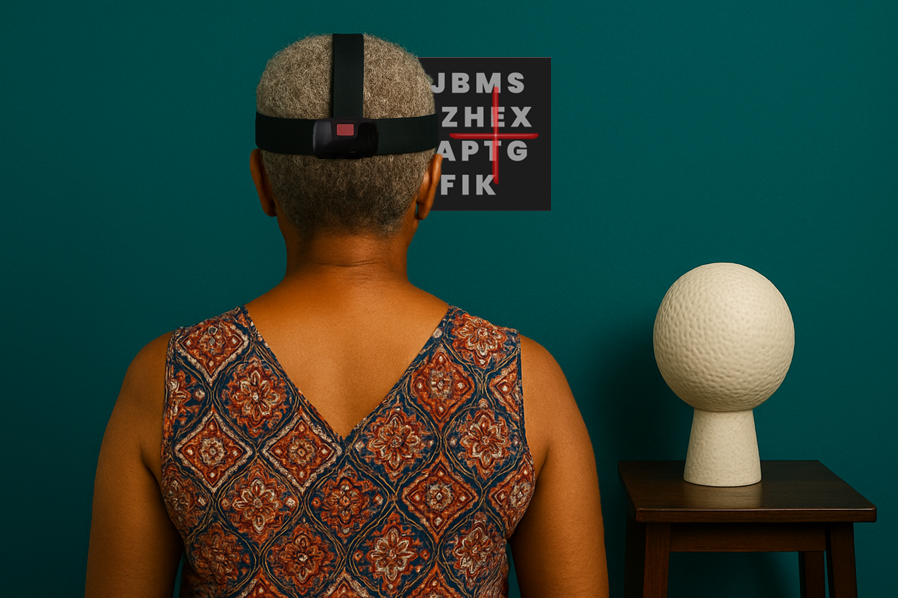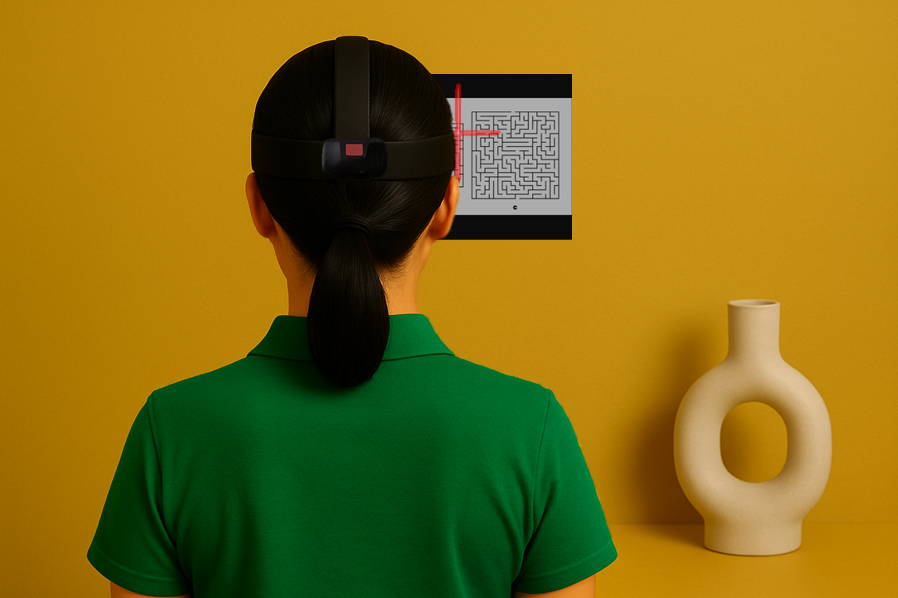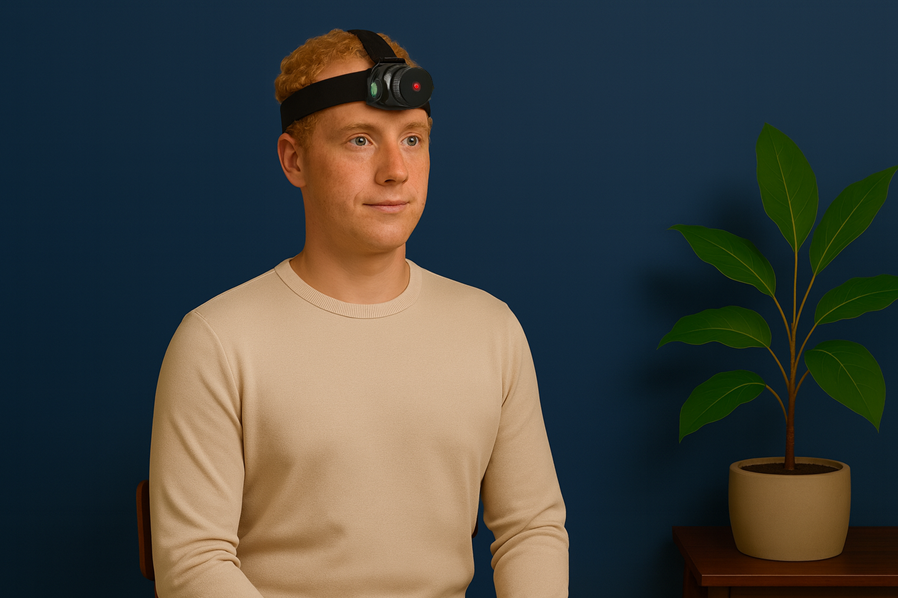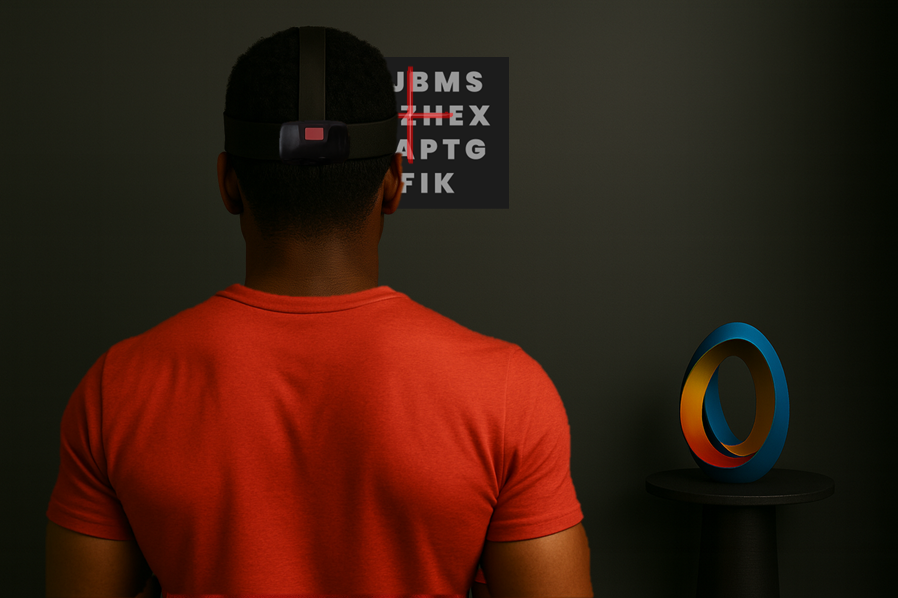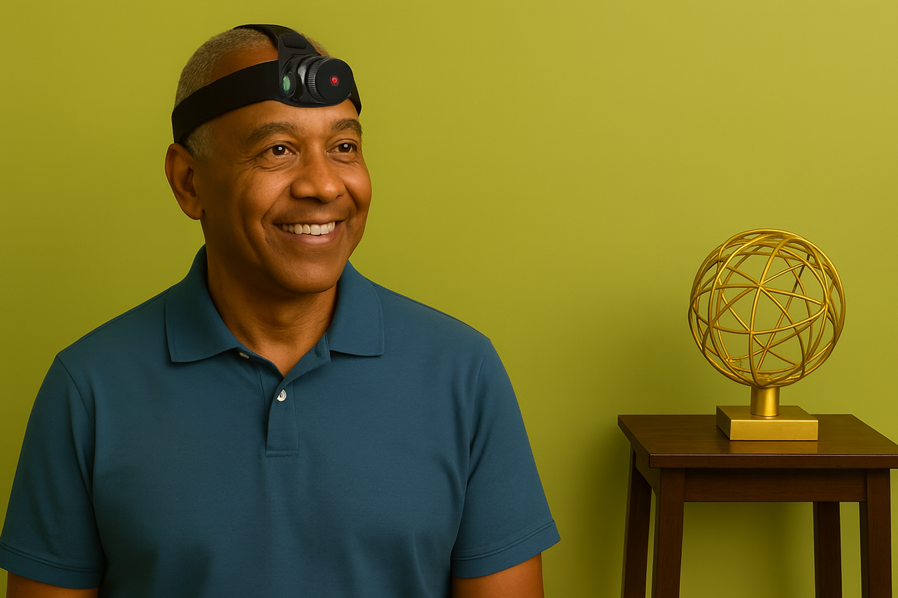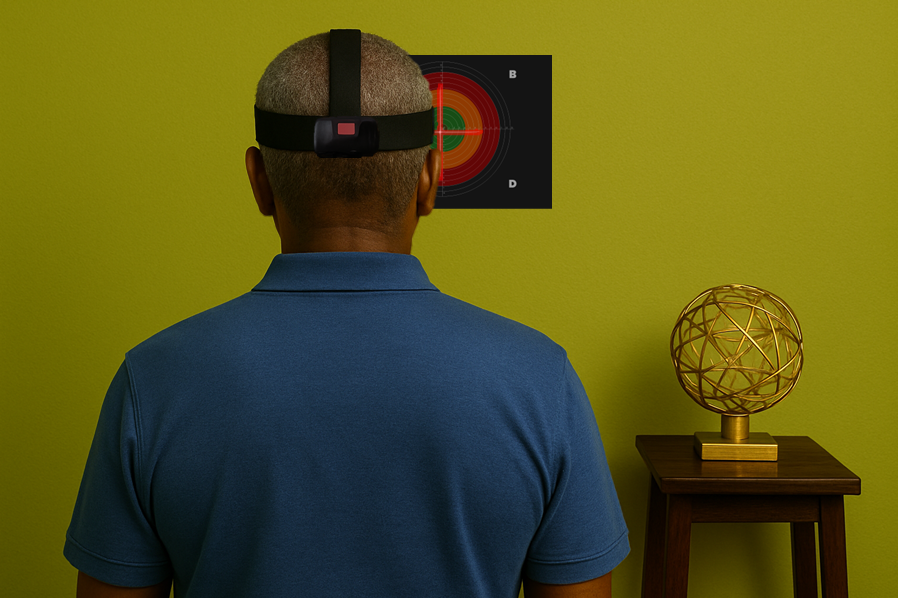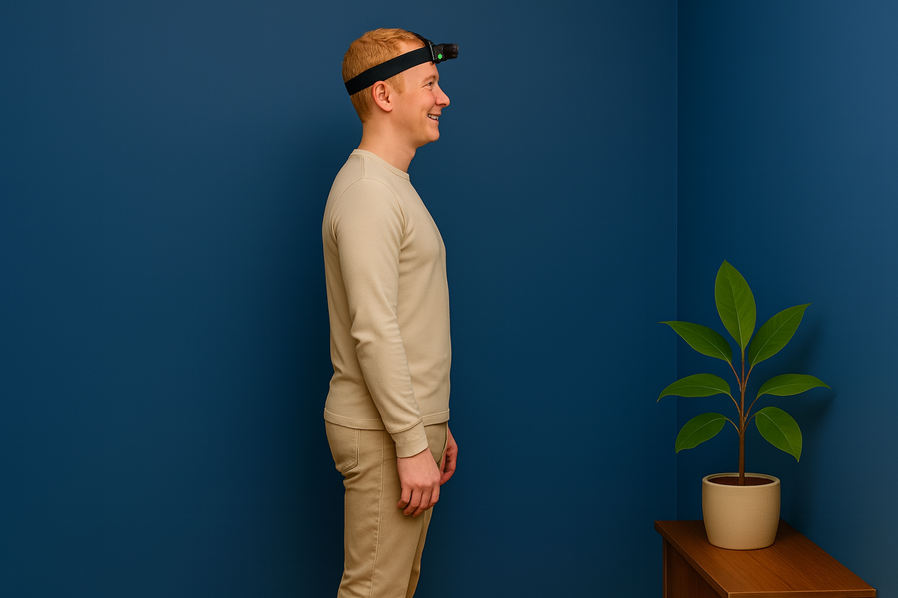Standing Balance & Postural Integration
These exercises support progression from supported positions to standing tasks that challenge balance through the ankles, hips and trunk. By maintaining steady cross hair alignment during tandem stance, foam pad work or weight shifts, the individual develops head stability alongside full-body control. This promotes coordinated movement for safe and confident mobility in daily life.
-
D.1
-
D.2
-
D.3
-
D.4
-
D.5
-
D.6
-
D.7
-
D.8
-
D.9
-
D.10
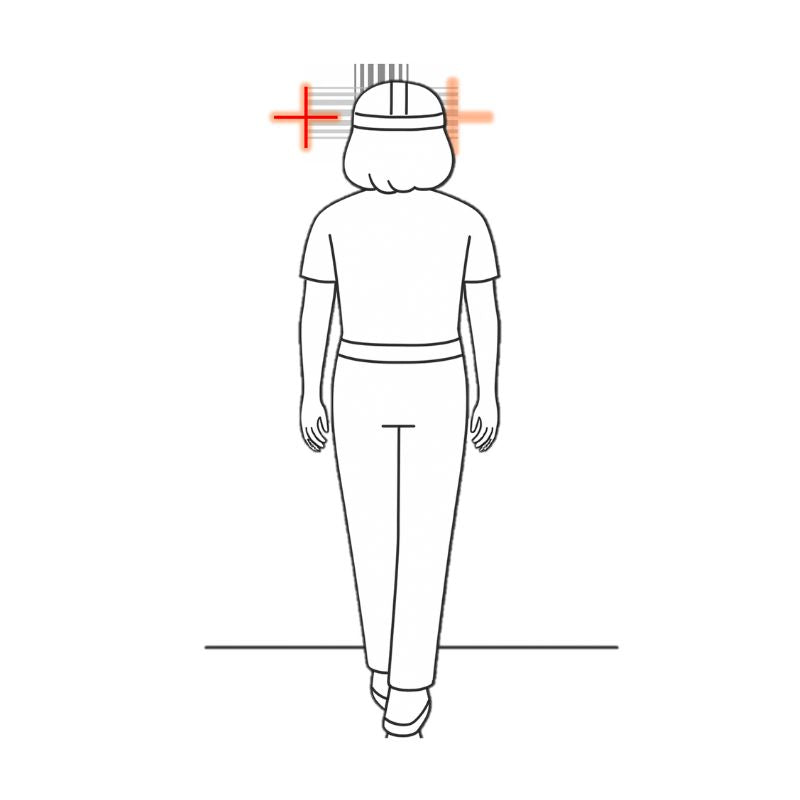
Tandem Horizontal Tracking
Stand in a heel-to-toe (tandem) stance facing a horizontal line at eye level.
Project the cross-hair onto the line. Using only head movement, slowly trace the line from left to right and back.
Complete full passes while keeping your balance and maintaining cross-hair alignment.
Switch foot position and repeat.
Why it matters?
This exercise improves your ability to sense where your head is while standing in a narrow stance.
It strengthens coordination between your neck and lower body and builds awareness of head position during more unstable postures.
This supports safer walking and steadier balance when turning or changing direction.
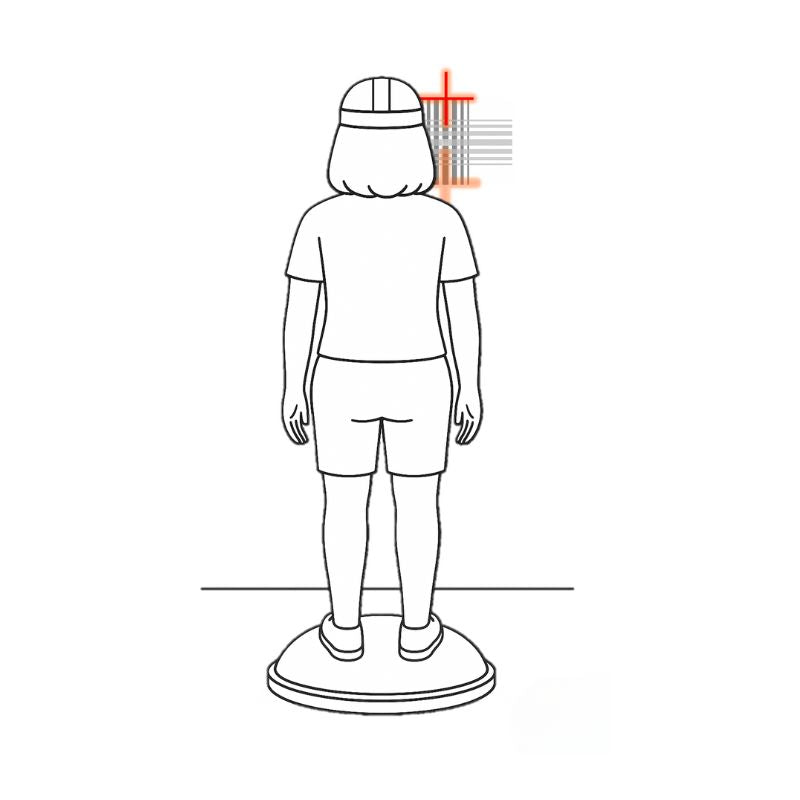
Foam Vertical Tracking
Stand on a foam pad facing a vertical line at eye level. Project the cross-hair onto the line.
Using head movement only, slowly trace the cross-hair up and down the line while maintaining balance on the foam.
Complete smooth vertical passes, focusing on head control and stability throughout.
Why it matters?
By adding vertical head movement to an unsteady surface, this exercise helps refine large-range control of your neck while your balance is challenged.
It teaches your body to stay centred and stable even when shifting your visual focus, which is important for navigating uneven ground or busy environments.
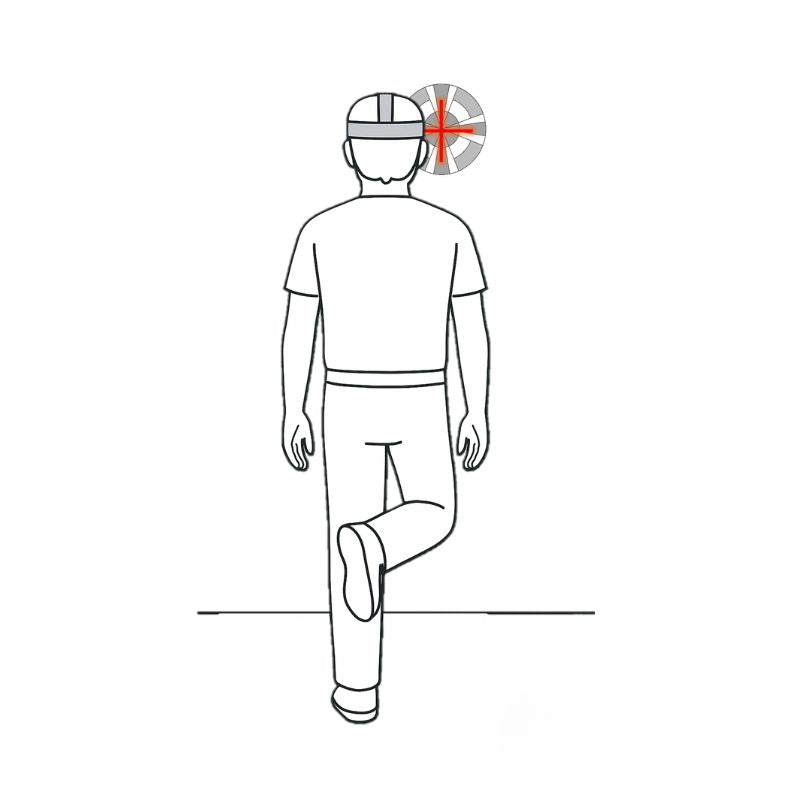
Single-Leg Hold
Stand facing a central target at eye level and project the cross-hair onto it.
Lift one foot off the ground and balance on the other leg while keeping the cross-hair steady on the target.
Hold this position without letting the head drift. Switch legs and repeat.
Perform holds on each side, focusing on balance and visual stability.
Why it matters?
Balancing on one leg while keeping your head still strengthens the connection between postural control and cervical stability.
It trains the muscles that help prevent sway or collapse when your support base is reduced, such as during stepping, reaching, or reacting to a sudden push.
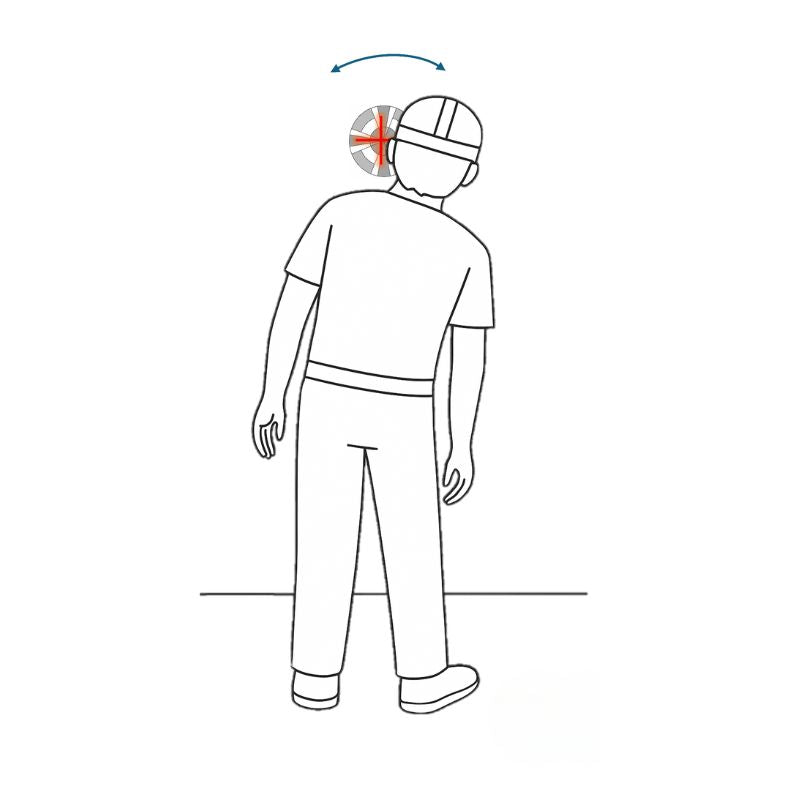
Weight-Shift Track
Stand with feet shoulder-width apart facing a horizontal line at eye level.
Project the cross-hair onto the line. While keeping the cross-hair steady, shift your body weight slowly from one leg to the other, without stepping or letting your head drift.
Repeat the side-to-side weight shift, maintaining smooth control and alignment throughout.
Why it matters?
This exercise increases your awareness of weight distribution and teaches your body to make smooth adjustments from side to side.
It promotes midline stability and symmetrical head control, reducing postural drift and helping maintain equilibrium during transitions like standing from sitting or stepping sideways.
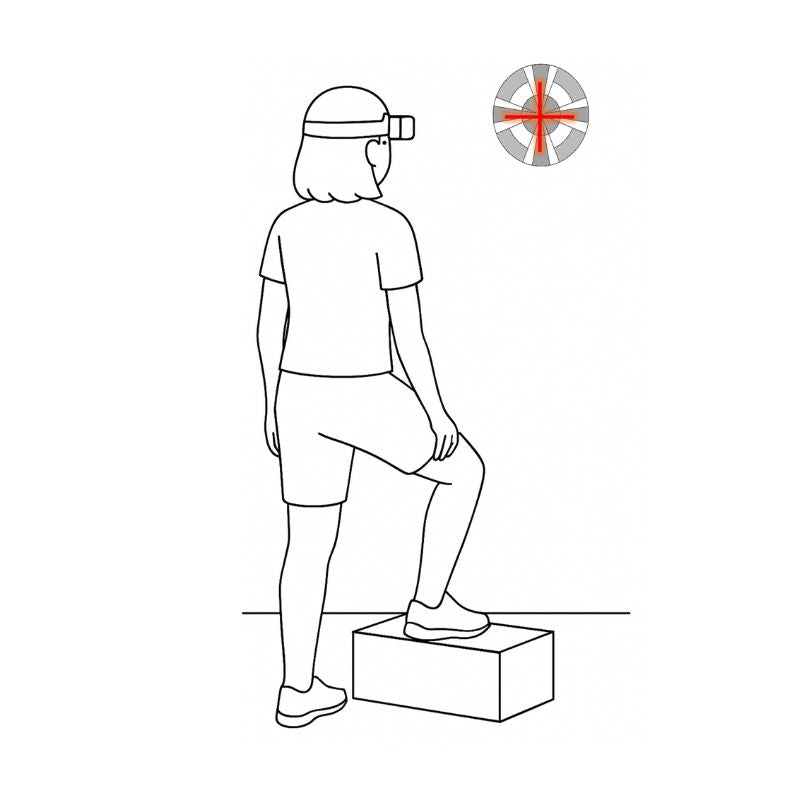
Step-Up Fixation
Stand facing a wall-mounted target with a small step in front of you.
Project the cross-hair onto the target at eye level.
Step up onto the platform and hold your balance for 3 seconds while keeping the cross-hair steady. Step back down with control.
Repeat step-ups, maintaining visual alignment throughout each movement.
Why it matters?
Coordinating upward movement with visual stability develops your ability to maintain focus while changing height.
It strengthens the postural muscles required for climbing stairs or curbs and improves your capacity to stay visually anchored during short bursts of upward effort.
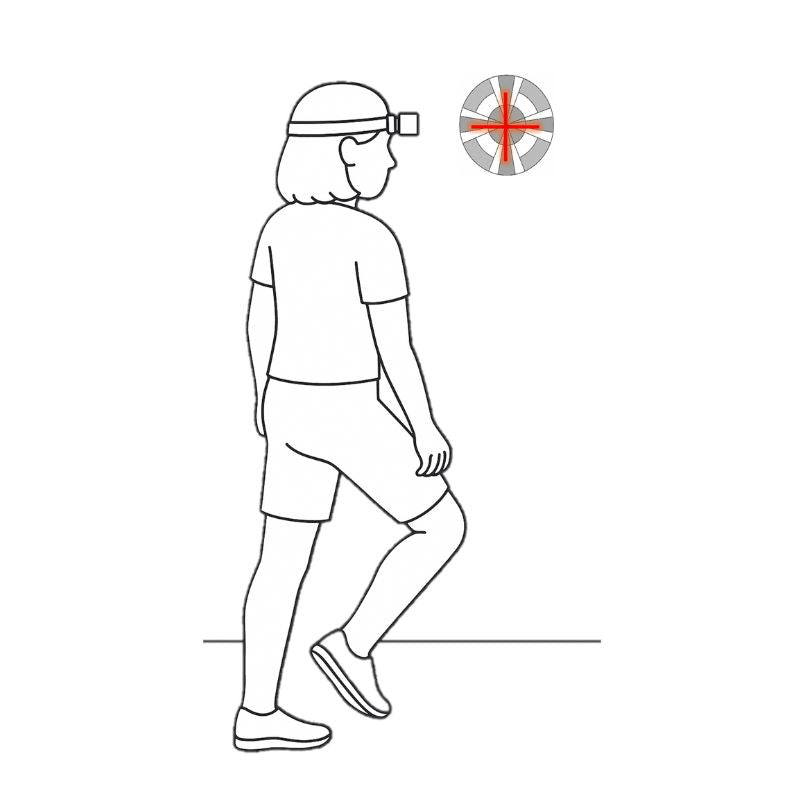
Gaze–Hold Step
Stand facing a central target at eye level and project the cross-hair onto it.
While keeping your head steady and the cross-hair aligned, take one slow step forward, pause briefly, then step back to your starting position.
Repeat this stepping motion, maintaining stable gaze and cross-hair fixation throughout. Movements should be smooth and controlled.
Why it matters?
Linking forward stepping with head control improves your ability to maintain steady gaze while moving through space.
It helps develop balance and spatial awareness when walking or approaching objects, particularly in environments that demand both focus and mobility.
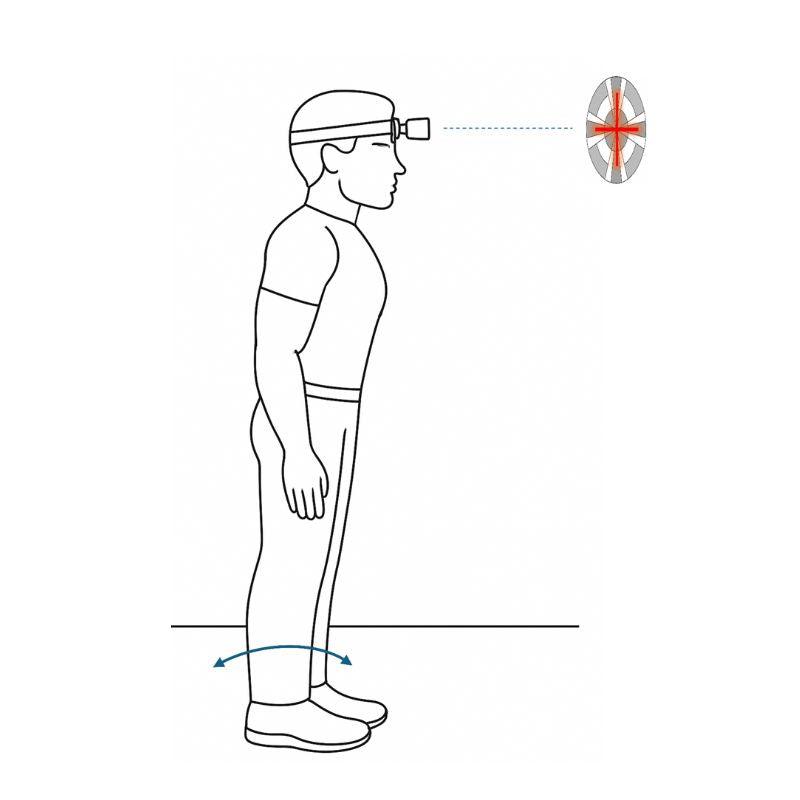
Anterior–Posterior Shift Tracking
Stand facing a central target with feet hip-width apart and project the cross-hair onto the target.
Slowly shift your weight forward onto your toes, then back onto your heels, keeping your head steady and the cross-hair fixed.
Repeat this forward–backward movement, focusing on smooth weight transfer without letting the cross-hair drift.
Why it matters?
Practising forward and backward weight shifts while keeping your gaze stable enhances whole-body control during movements that involve acceleration or braking.
It helps retrain how your head responds during directional changes and reduces the risk of falling backwards or overreaching forwards.
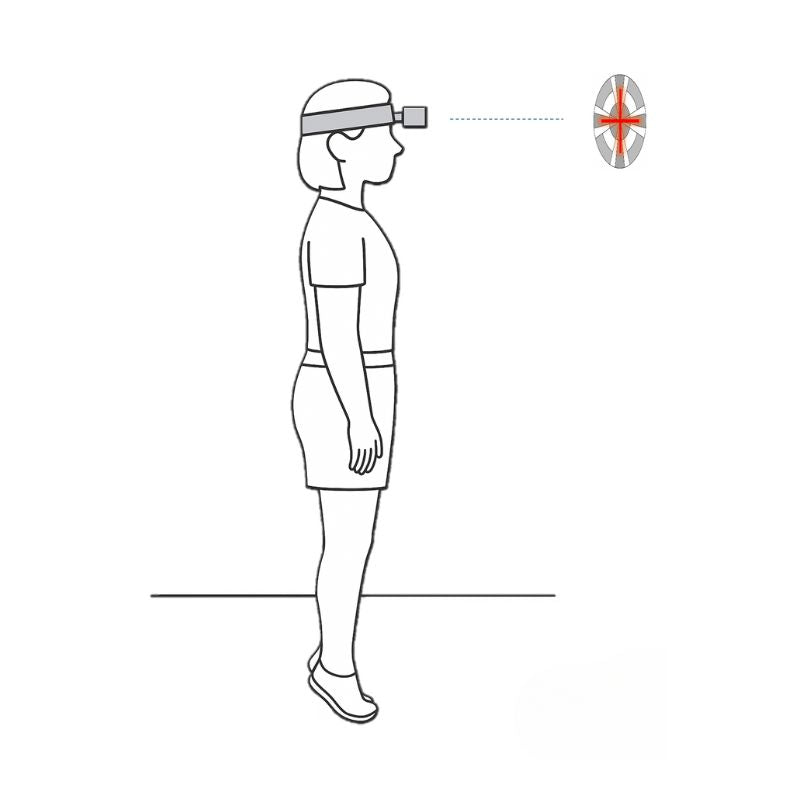
Heel Raise Hold
Stand facing a central target at eye level and project the cross-hair onto it.
Slowly rise onto your toes and hold the position for 10 seconds while keeping the cross-hair steady.
Lower back down with control.
Repeat these holds, focusing on balance, head stability and smooth alignment throughout.
Why it matters?
This exercise strengthens your calves and balance reactions while reinforcing steady head control on a narrow base.
Holding the raised posture builds endurance in stabilising muscles and promotes upright alignment for situations that demand postural poise, such as tiptoeing or reaching overhead.
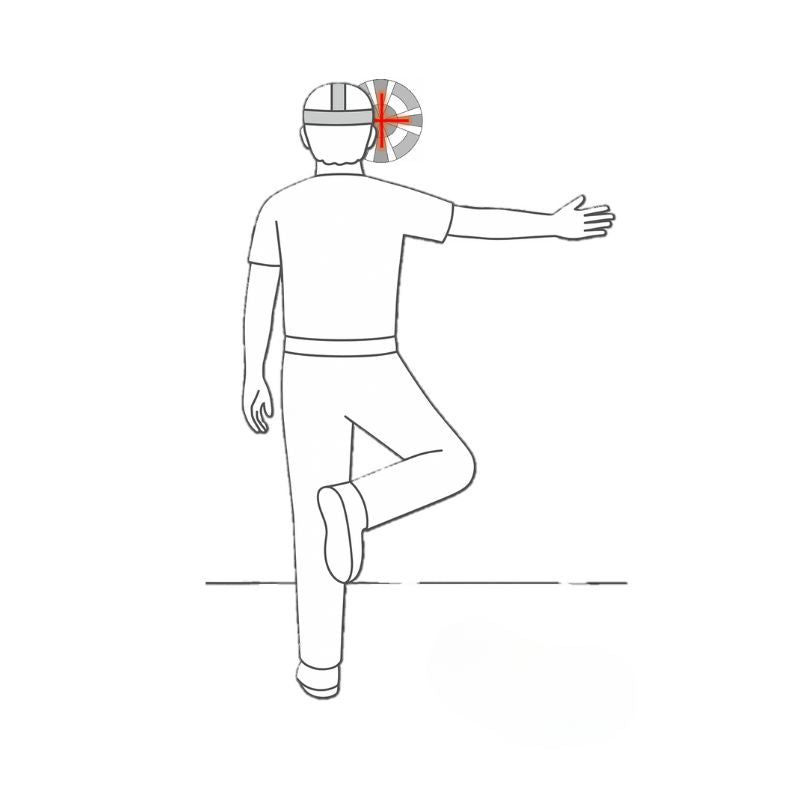
Balancing Reach
Stand on one leg facing a central target at eye level and project the cross-hair onto it.
While keeping your head steady and the cross-hair aligned, reach out from body.
Return to the starting position without losing balance or letting the cross-hair drift.
Perform reaches with each arm before switching legs.
Why it matters?
Combining single-leg balance with reaching activates full-body coordination and neck control during a dynamic task.
It simulates real-world challenges like retrieving objects while moving or leaning, enhancing your ability to stay upright and focused under physical stress.
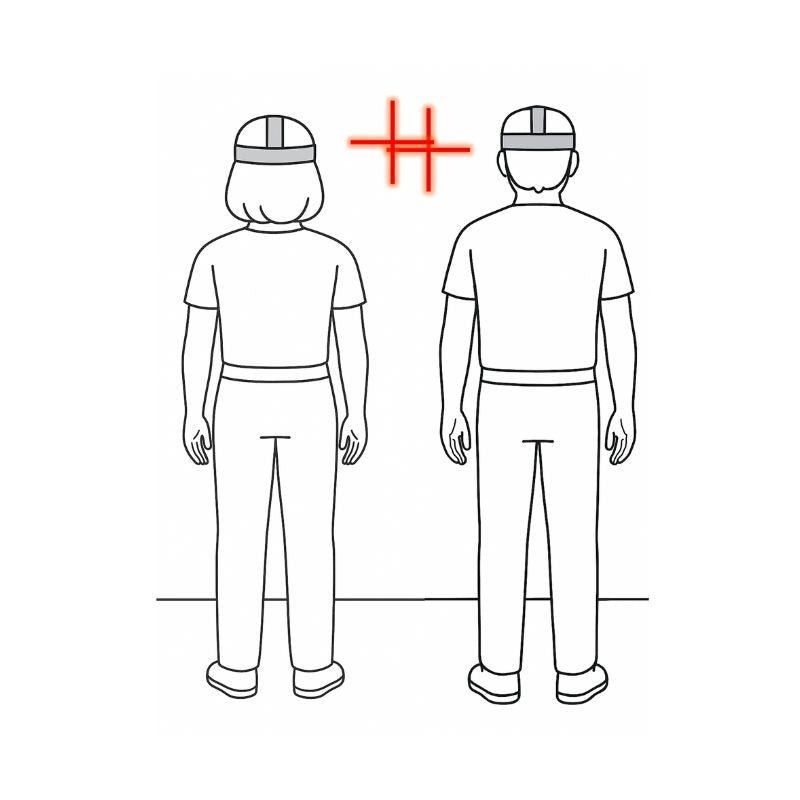
Mirror Match
Stand side by side with a partner, both facing a wall-mounted target.
The partner leads with slow, controlled head movements. Mirror these movements in real time, keeping their cross-hair aligned.
If no second laser is available, the partner may use a torch to guide the motion.
Why it matters?
This exercise trains you to match external movement cues precisely, improving head control in response to visual guidance.
It supports concentration, timing and motor coordination, especially when following someone else’s lead.
It’s ideal for restoring dynamic control in team environments or group activities.

